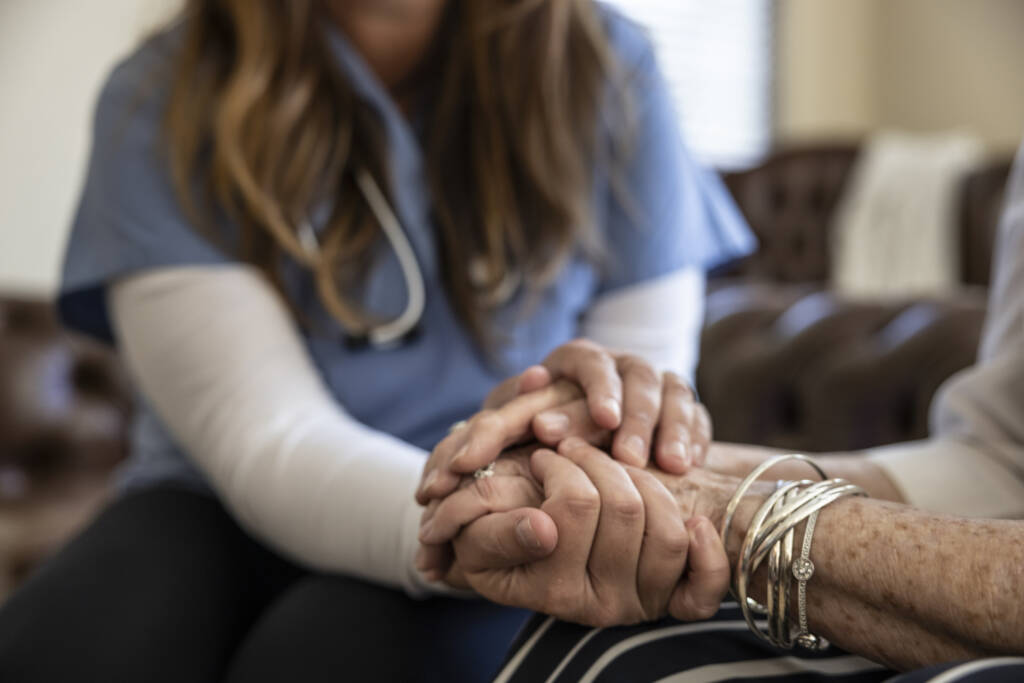
Allied Health Assistant 1a

Allied Health Assistant 1a: Introduction
Are you passionate about helping people and making a difference in their lives? Explore your options by learning how to properly care for your patients and provide for the administrative needs of healthcare. Learn to prepare exam room, schedule, bill, and document all while solidifying your professional skills in communication, privacy, safety, and ethics.
During this course, you will learn career-related skills and earn a badge for this accomplishment. A badge is a digital certification of your career-related learning that you can share on social media and higher education platforms, or with colleges, potential employers, peers, and colleagues. Select this link to learn more about badges.
Major Topics and Concepts
Unit 1: From Classroom to Clinical Rotation
- Understand the histories of the four patients who will be followed throughout the course
- Identify the scope of practice for various members of the interdisciplinary healthcare team
- Explain communication and its role in healthcare
- Demonstrate an understanding of confidentiality and a patient’s right to privacy
Unit 2: Safety First: Individual and Public Responsibilities
- Implement standard precautions and infectious disease control measures
- Maintain a safe work environment
- Explain the scope of public health and epidemiology
- Compare and contrast the various regulatory bodies responsible for ensuring the safety of healthcare providers
Unit 3: Helping Patients With Hygiene
- Identify the scope of practice of an occupational therapy assistant
- Provide personal care and hygiene to patients with varying needs
- Educate patients on different types of adaptive equipment used in their care
- Support patients in the completion of their activities of daily living
Unit 4: Helping Patients With Eating and Dressing
- Support a patient in activities of daily living such as clothing care, food preparation, and money management
- Explain the need for and employment of adaptive aids used for eating and dressing
- Compare and contrast common therapeutic diets
- Describe the care for patients with bowel and bladder elimination needs
Unit 5: Helping Patients With Ambulation
- Discuss the scope of practice for rehabilitation services; services, including physical therapy
- Define disability and identify various types of abilities
- Demonstrate body mechanics that will ensure patient and personal safety
- Describe the various types of immobilization devices and the management of clients who use them
Unit 6: Mental Health, the Patient, and Furry Companions
- Compare and contrast various mental illnesses
- Differentiate between physiological and mental pain
- Explore the use of opioids for pain management
- Examine the history and current state of the opioid crisis in the United States
- Discuss the use of companion animals and service animals for mental health support
- Describe the care required for service or companion animals
Unit 7: Care Across the Life Span
- Explain the stages of growth and development across the lifespan
- Describe complementary and alternative medicinal therapies and how they are used during the various life stages
- Discuss end-of-life and postmortem care
- Compare and contrast the various types of abuse and the mandates for reporting them
Unit 8: Medical Office Administration
- Summarize the role of the medical office assistant (MOA) in preparing an examination room
- Measure routine vital signs and describe when alterations should be reported
- Demonstrate an understanding of basic medical terminology
- Understand what is required to create and submit a medical bill
- Describe the financial terms and procedures involved in operating a medical office practice
Competencies
Role of the Allied Health Assistant
Students will demonstrate an understanding of the role of an allied health assistant by identifying allied health assistant positions, explaining responsibilities and practice guidelines, and describing the importance of communication skills in a healthcare setting.
Safety in Allied Healthcare
Students will demonstrate an understanding of safety in allied health care by describing safe spaces and explaining safety equipment and public health entities.
Hygiene
Students will demonstrate an understanding of hygiene by evaluating methods for assisting patients with hygiene and by describing the role of an occupational therapy assistant in movement and hygienic care.
Daily Living Activities
Students will demonstrate an understanding of assisting patients with their daily living activities by assessing nutrition needs and describing elimination and dressing concepts.
Ambulation
Students will demonstrate an understanding of ambulation by explaining mobility concepts and by describing rehabilitation practices.
Mental Health
Students will demonstrate an understanding of a patient’s mental health by defining mental illness, explaining the use of pharmaceuticals, and describing the benefits of assistance animals.
A Lifetime of Care
Students will demonstrate an understanding of a lifetime of care by explaining stage of life care and comparing complementary and alternative medicine.
Medical Office Administration
Students will demonstrate an understanding of medical office administration by describing clinical responsibilities and explaining administrative responsibilities.

